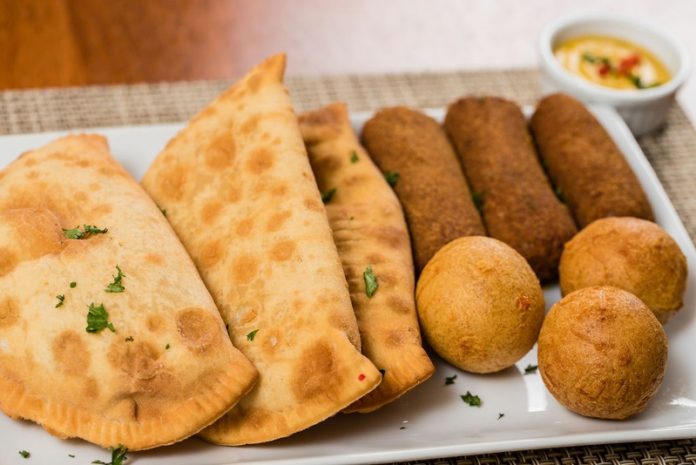(Oranjestad) – Like many other cultures, an important aspect of the Aruban cultural identity is our connection to food and food traditions. The local food traditions consist of a melting pot of different cultural and religious eating habits and dishes.
Breakfast, lunch and dinner
The routine of breakfast, lunch and dinner on the island is one that does not completely follow a European or American routine, despite the major influences from these parts of the world on our culture and way of living. When it comes to the three important meals of the day, most of the Aruban population follows a Latin-American influenced routine.
Breakfast
Breakfast in Aruba is quite simple: a cup of coffee or tea, some bread, and sometimes an egg. Sometimes, due to the need of a quick “to-go” breakfast, you may also find many snack trucks and cafes that sell sandwiches, pastechis (meat pie), arepas and empanadas early in the morning.
Main Meal
The main meal is typically eaten in most households around noon or in the afternoon. This can consist of meat, fish, and chicken—stewed or fried—with funchi (polenta) or rice with stewed vegetables. Often, fried or boiled plantain or pan bati (Aruban pancake) is included. Stews are a staple in Aruban cuisine and can are largely influenced by Latin-American and Latin/Afro-Caribbean Stews. Some of the more unique stews and soups from the ABC Islands* include sopi di bonchi cora (red kidney bean soup with pig tail), sopi mondongo (tripe soup), carni stoba (beef stew), comcomber stoba (West Indian gherkin stew) and much more.
Dinner Time
Dinner time can vary significantly from household to household. Unlike the U.S. or in Europe, dinner time typically does not consist of a whole (warm) meal. Instead, the evening “meal” can typically consist of something lighter, like a sandwich, though it is not uncommon to see leftovers from the main meal reheated and eaten again. Tea and coffee are often also served with the evening snack.
(Religious) Holidays
Christmas is probably the biggest global holiday, and every culture has its own spin on what their Christmas cuisine entails. In Aruba, our Christmas cuisine is again largely based on Latin-American influences, most notably form Venezuela. Ayacas and the famous pan di ham* are two crucial holiday dishes, along with stuffed turkey, roasted glazed ham topped with pineapples, arroz con pollo (rice and chicken) and potato salad, among other items. Traditional drinks include ponche crema (Aruban eggnog), chuculati pinda (hot chocolate with peanut butter), and homemade fruit punch. Desserts include, bolo di pistachio (pistachio cake), bolo di cashupete (cashew cake), quesillo (flan), bolo preto (dark fruit cake), drigidek (gingerbread), pan boyo (bread cake) and more.
Snacks and tasty delights
Besides meals and dishes that are eaten on the dinner table, Aruba also has a food tradition that includes snacks and other tasty delights that you may easily find around the island. These include, Saco*, basket, pastechi, kroket, deditos, Johnny cake and more. These snacks are usually sold at local snack trucks and cafes, often located on the side of the road. In the area of Tanki Leendert and Tanki flip, for example, there are many of these trucks parked on the side of the road and often open until late at night—offering tasty and filling snacks post night-life fun.
*ABC Islands: Aruba, Bonaire and Curacao
*Pan di ham: Derived from the Venezuelan Pan de Jamon (rolled up bread with ham, raisins and olives)
*Saco: Saco literally means “bag”. Saco contains fried potatoes, plantains, chicken (and ribs) and a Johnny cake, served in a paper bag.
Source: Voeding, voedingsgewoonten en gerechten op Aruba (Nutrition, Food Traditions and Dishes on Aruba) by Biblioteca Nacional Aruba

















